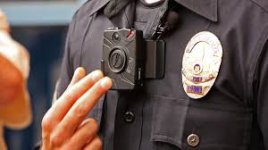In the modern era of civil unrest, viral videos, and calls for accountability, body cameras have become a symbol of transparency in law enforcement. But the question remains: should police officers wear body cameras at all times? The answer, for many, is a resounding yes—but not without nuance.
Body cameras are powerful tools. They don’t just protect the public; they also protect officers from false accusations. When turned on, these small devices capture objective evidence that can clarify incidents, diffuse tension, and build public trust. In fact, departments that have adopted 24/7 body cam usage often report fewer complaints and a decline in use-of-force incidents.
However, there’s a twist: privacy concerns. Should officers be recorded during breaks, personal conversations, or when dealing with sensitive cases like sexual assault or domestic violence? Critics argue that constant recording turns the force into a surveillance state, not just for police but for everyday citizens caught on tape. Balance is key, but where is the line?
Then comes the issue of selective activation. If cameras are only turned on during specific situations, the potential for abuse or manipulation increases. Crucial moments might “accidentally” be missed, and narratives can be altered. To counter this, full-time activation—at least during all public interactions—could be a safeguard against both misconduct and misrepresentation.
Additionally, the footage must be stored securely and reviewed independently. Without strict policies around access and use, body cameras become tools of control rather than justice.
Ultimately, the call for body cams at all times stems from a larger demand: justice must not only be done but must be seen to be done. In an age where perception often becomes reality, body cameras provide the clarity needed to separate truth from speculation.
Yes, body cameras are not a magic solution. But when paired with proper training, policy, and oversight, they are an essential step toward rebuilding public trust and ensuring accountability on both sides of the badge.
Body cameras are powerful tools. They don’t just protect the public; they also protect officers from false accusations. When turned on, these small devices capture objective evidence that can clarify incidents, diffuse tension, and build public trust. In fact, departments that have adopted 24/7 body cam usage often report fewer complaints and a decline in use-of-force incidents.
However, there’s a twist: privacy concerns. Should officers be recorded during breaks, personal conversations, or when dealing with sensitive cases like sexual assault or domestic violence? Critics argue that constant recording turns the force into a surveillance state, not just for police but for everyday citizens caught on tape. Balance is key, but where is the line?
Then comes the issue of selective activation. If cameras are only turned on during specific situations, the potential for abuse or manipulation increases. Crucial moments might “accidentally” be missed, and narratives can be altered. To counter this, full-time activation—at least during all public interactions—could be a safeguard against both misconduct and misrepresentation.
Additionally, the footage must be stored securely and reviewed independently. Without strict policies around access and use, body cameras become tools of control rather than justice.
Ultimately, the call for body cams at all times stems from a larger demand: justice must not only be done but must be seen to be done. In an age where perception often becomes reality, body cameras provide the clarity needed to separate truth from speculation.
Yes, body cameras are not a magic solution. But when paired with proper training, policy, and oversight, they are an essential step toward rebuilding public trust and ensuring accountability on both sides of the badge.

